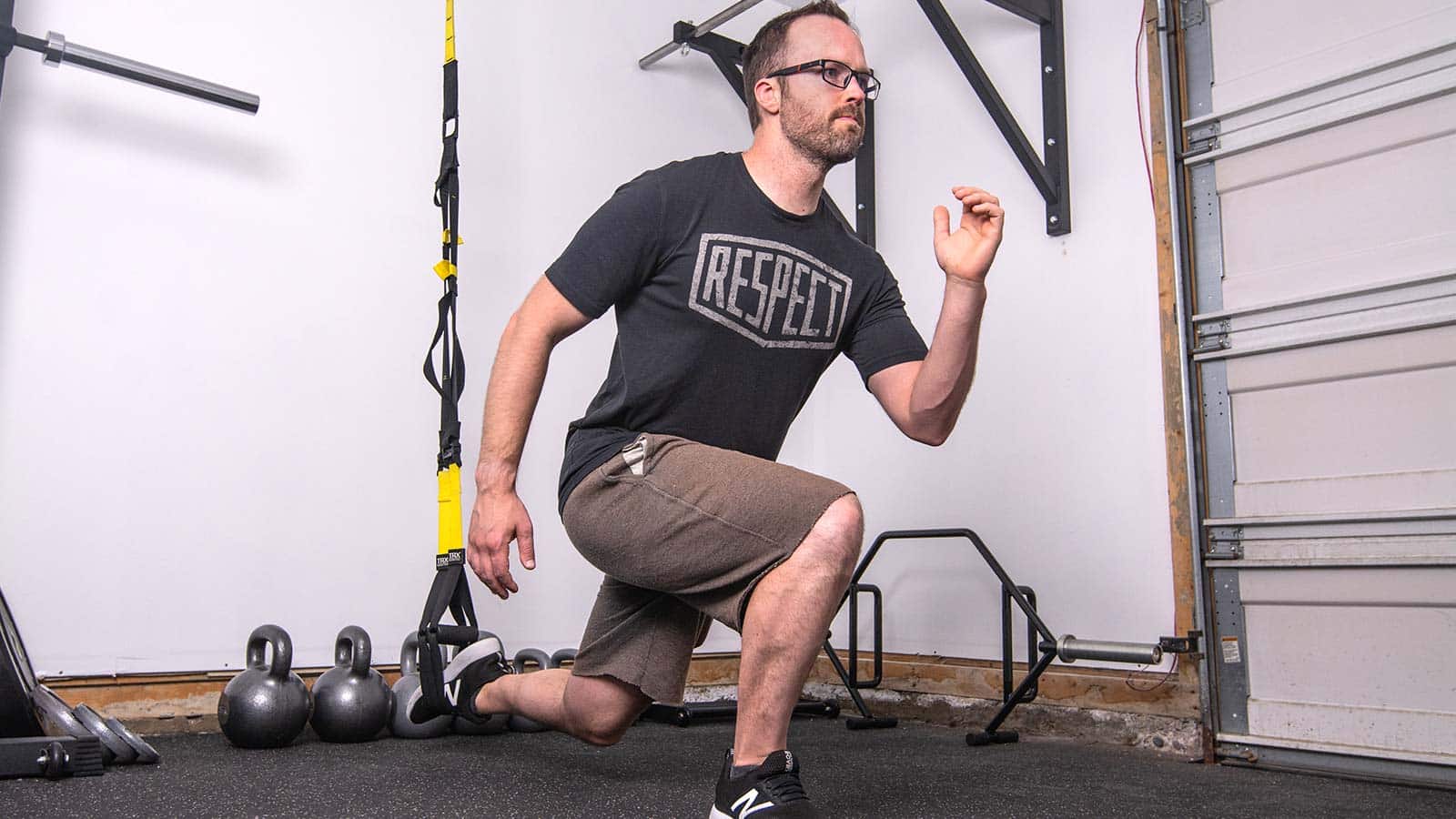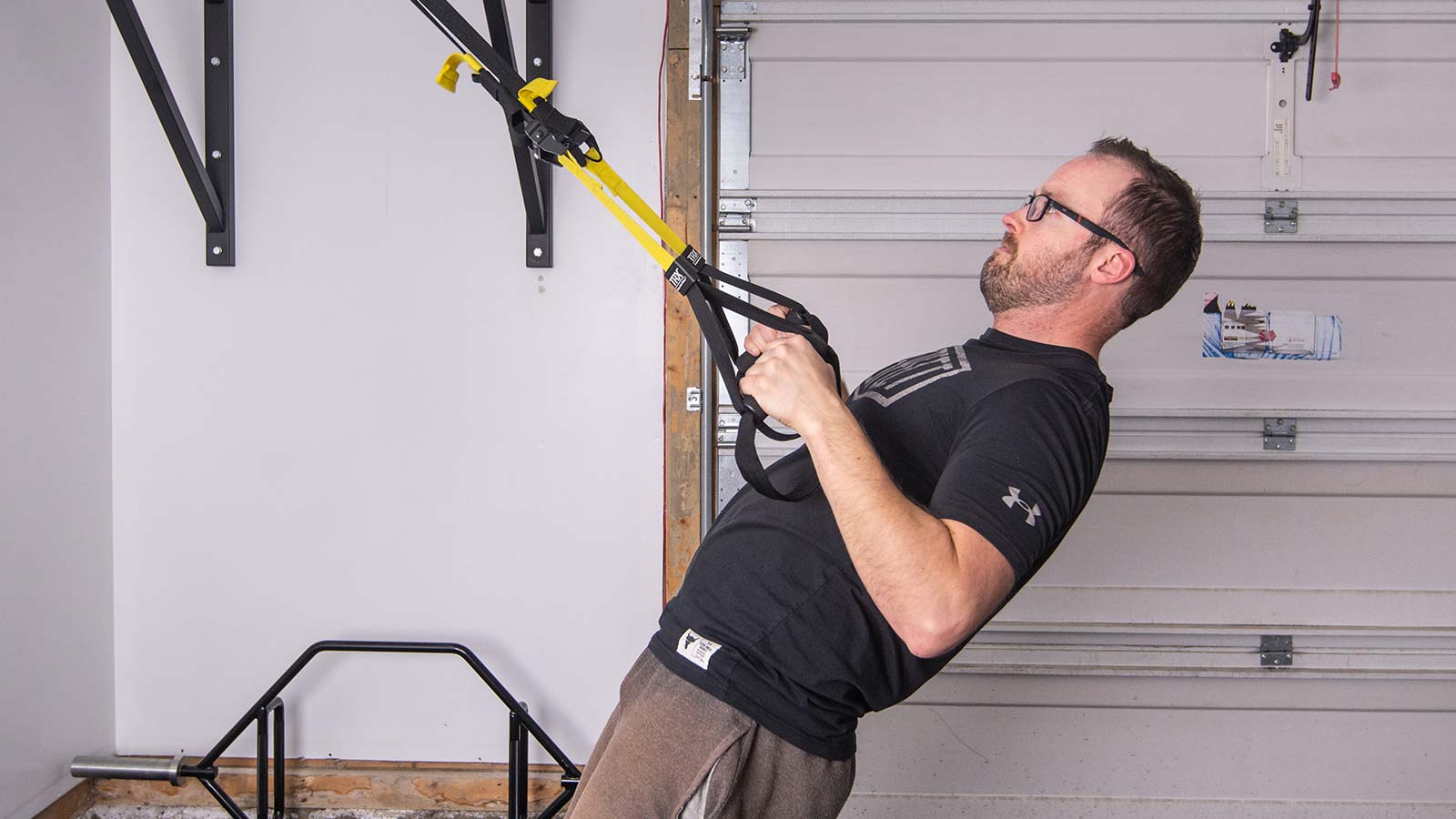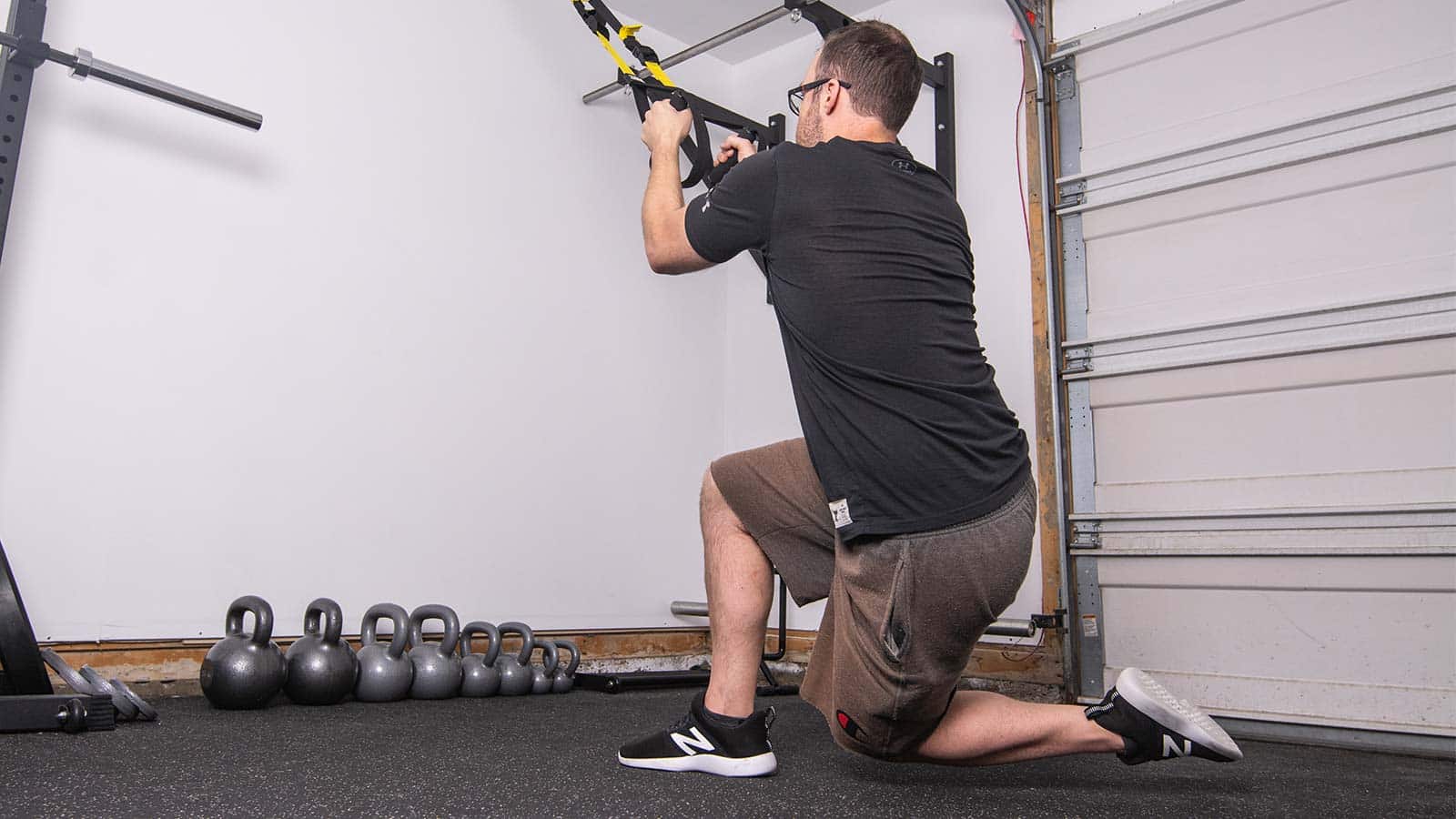Disclosure statement: I have an affiliation with TRX.
If you would like to save 15% when purchasing any TRX products, such as the suspension trainer, feel free to use this link to TRX website and enter the discount code “TRXSR15” at checkout!
The TRX is (and has been) at the top of my “most valued piece of fitness equipment” for probably a decade now.
If you’ve never used one before, or are unfamiliar with it, it is a bodyweight trainer that provides amazing strength training versatility for the entire body. It can also be used for injury rehabilitation (when appropriate) and even mobility training.

TRX lunges are an outstanding exercise for hammering your legs while also helping to improve your balance!
What makes the TRX so unique:
- The challenge for most exercises can be optimized for a person’s abilities simply by changing the placement of their feet in relation to the anchor point of the TRX.
- It can provide adequate physical challenge for world-class athletes and fitness beginners alike.
- It takes up virtually no space and can be used in a gym or in the comfort of one’s own home.
TRX has branched out from their days of making the TRX suspension trainer to a handful of other products. I haven’t used all of them, so I can’t really attest to them, however, I’m a firm believer that one of the best pieces of fitness equipment to purchase is the TRX resistance trainer.

The TRX row is a classic TRX exercise that is a staple for nearly any suspension training regimen!
If you’d like to learn some very helpful information with using a TRX, feel free to check out my articles:
- How To Use A TRX For Injury Prevention (Serious Benefits)
- How (And Why) To Use A TRX For Injury Recovery: A detailed guide
I often use the TRX with many of my patients in the clinic and many clients I train in the gym; I can have them perform exercises that are:
- Part of an injury recovery program
- Part of an injury prevention program
- Designed to enhance athletic performance
- Designed to improve strength, mobility, or endurance

Nothing like a good ol’ courtesy squat with the TRX to improve balance, mobility, and lower-body strength!
